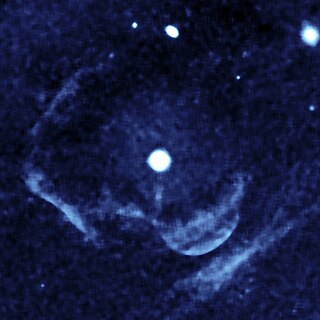Z camelopardalis
|
Double star Z camelopardalis |
|||||||
|---|---|---|---|---|---|---|---|

|
|||||||
| Gas envelope around Z camelopardalis | |||||||
| AladinLite | |||||||
|
Observation dates equinox : J2000.0 , epoch : J2000.0 |
|||||||
| Constellation | giraffe | ||||||
| Right ascension | 08 h 25 m 13.2 s | ||||||
| declination | + 73 ° 06 ′ 39.3 ″ | ||||||
| Apparent brightness | 10.0 (10.0 to 14.5) mag | ||||||
| Typing | |||||||
|
rel. Brightness (G-band) |
(12.58 ± 0.04) mag | ||||||
| rel. Brightness (J-band) |
(11.57 ± 0.03) mag | ||||||
| B − V color index | (+1.85) | ||||||
| Spectral class | pec (UG) + K7 V | ||||||
| Variable star type | UGZ + N | ||||||
| Astrometry | |||||||
| Radial velocity | (38) km / s | ||||||
| parallax | (4.44 ± 0.04) mas | ||||||
| distance | (734 ± 8) ly (225) pc |
||||||
| Proper movement | |||||||
| Rec. Share: | (−9.00 ± 0.05) mas / a | ||||||
| Dec. portion: | (−19.08 ± 0.06) mas / a | ||||||
| Physical Properties | |||||||
|
Other names and catalog entries |
|||||||
|
|||||||
Z Camelopardalis is a Cataclysmically Variable Star in the constellation Giraffe at a distance of about 730 light years . The system is named after the Z-Camelopardalis stars , a subgroup of the dwarf novae .
The system shows phases with strong fluctuations in the light curve and then again phases with almost constant brightness. It consists of a white dwarf and a main sequence star of the spectral class K. The fluctuations in brightness are caused by the accretion of matter from the main sequence star to the white dwarf.
Web links
Commons : Z Camelopardalis - collection of images, videos and audio files
- Aaron Price: Z Camelopardalis. Retrieved September 29, 2019 .
- Michael M. Shara: An ancient nova shell around the dwarf nova Z Camelopardalis. Retrieved September 29, 2019 .
